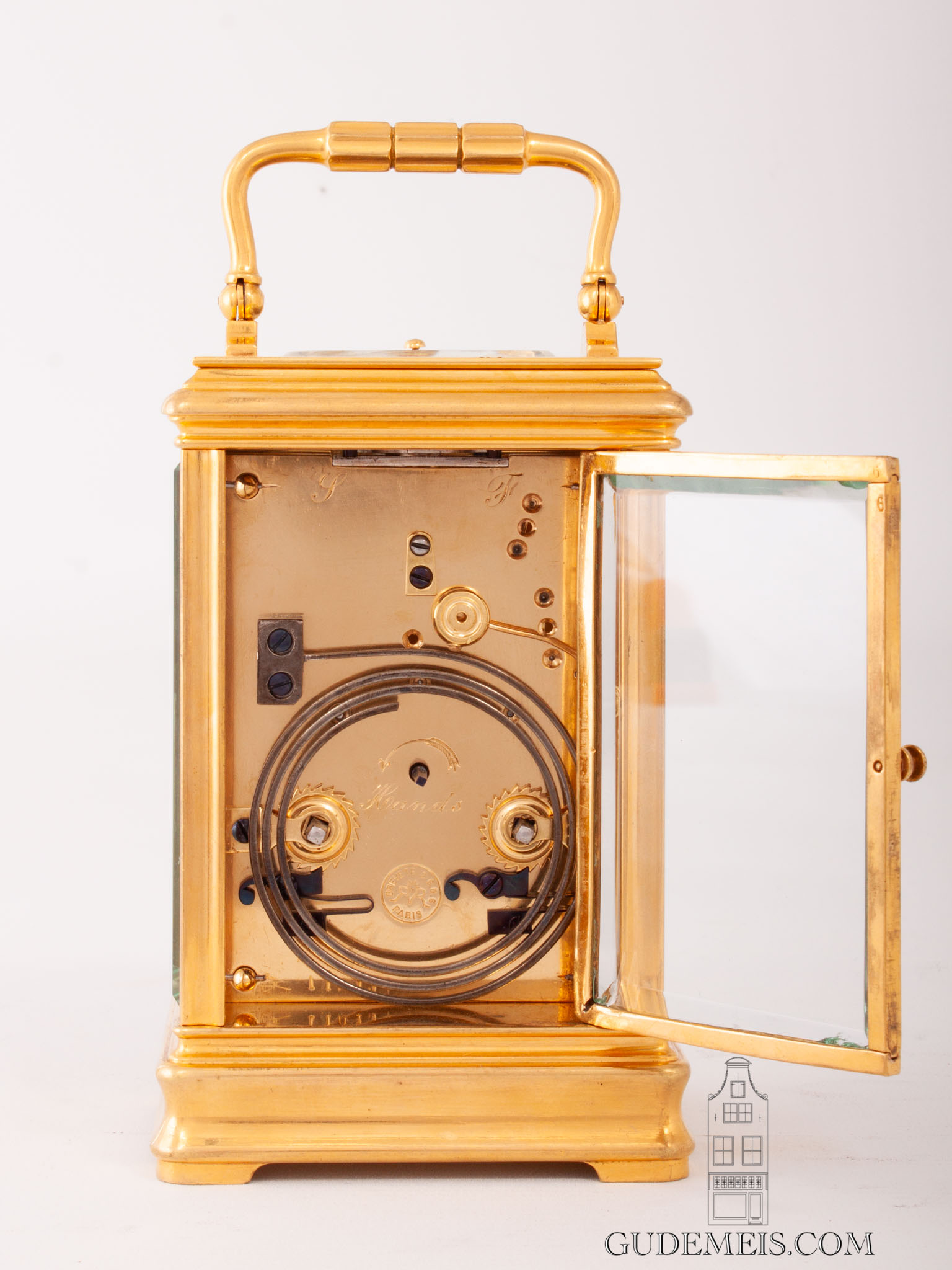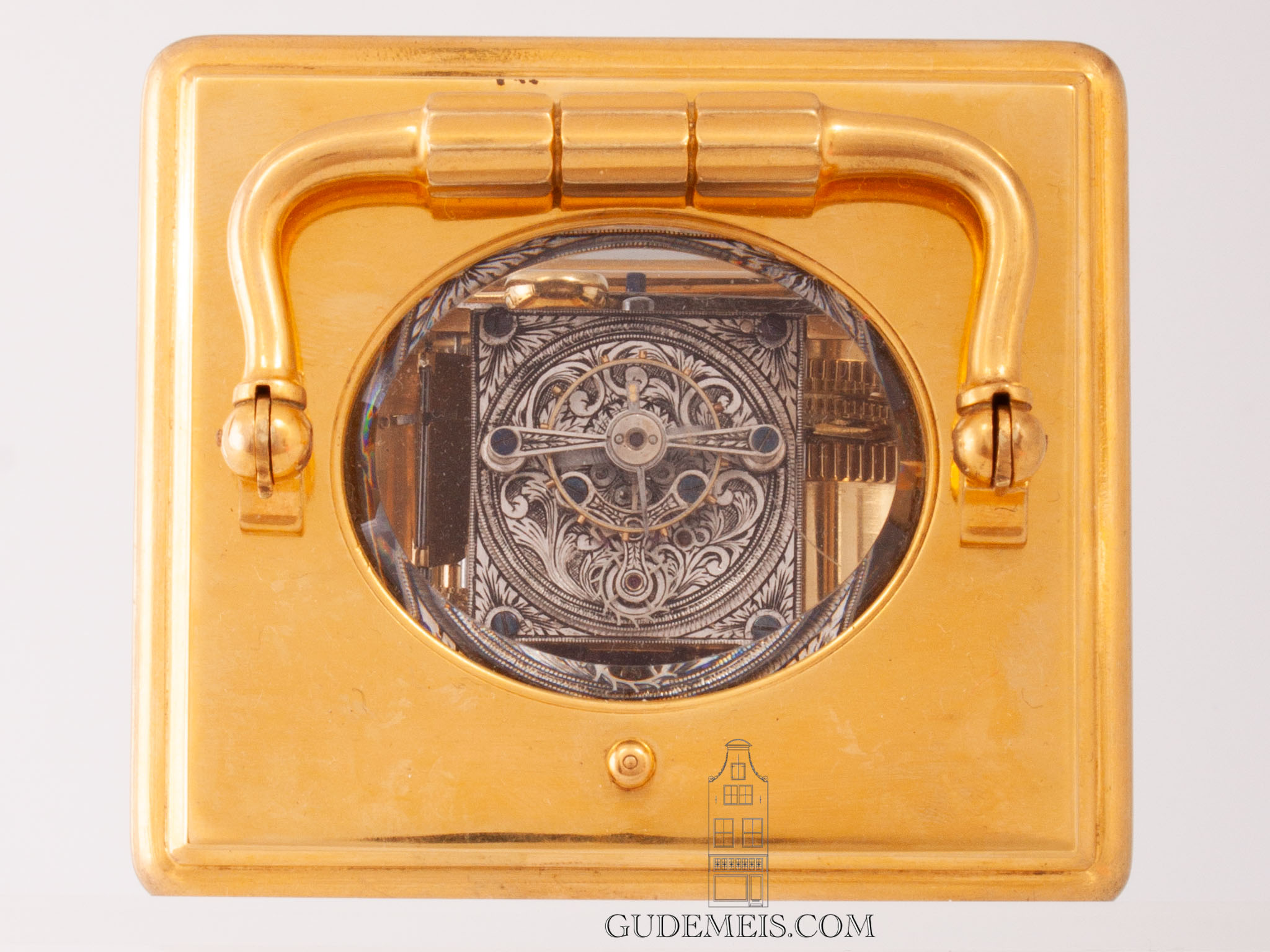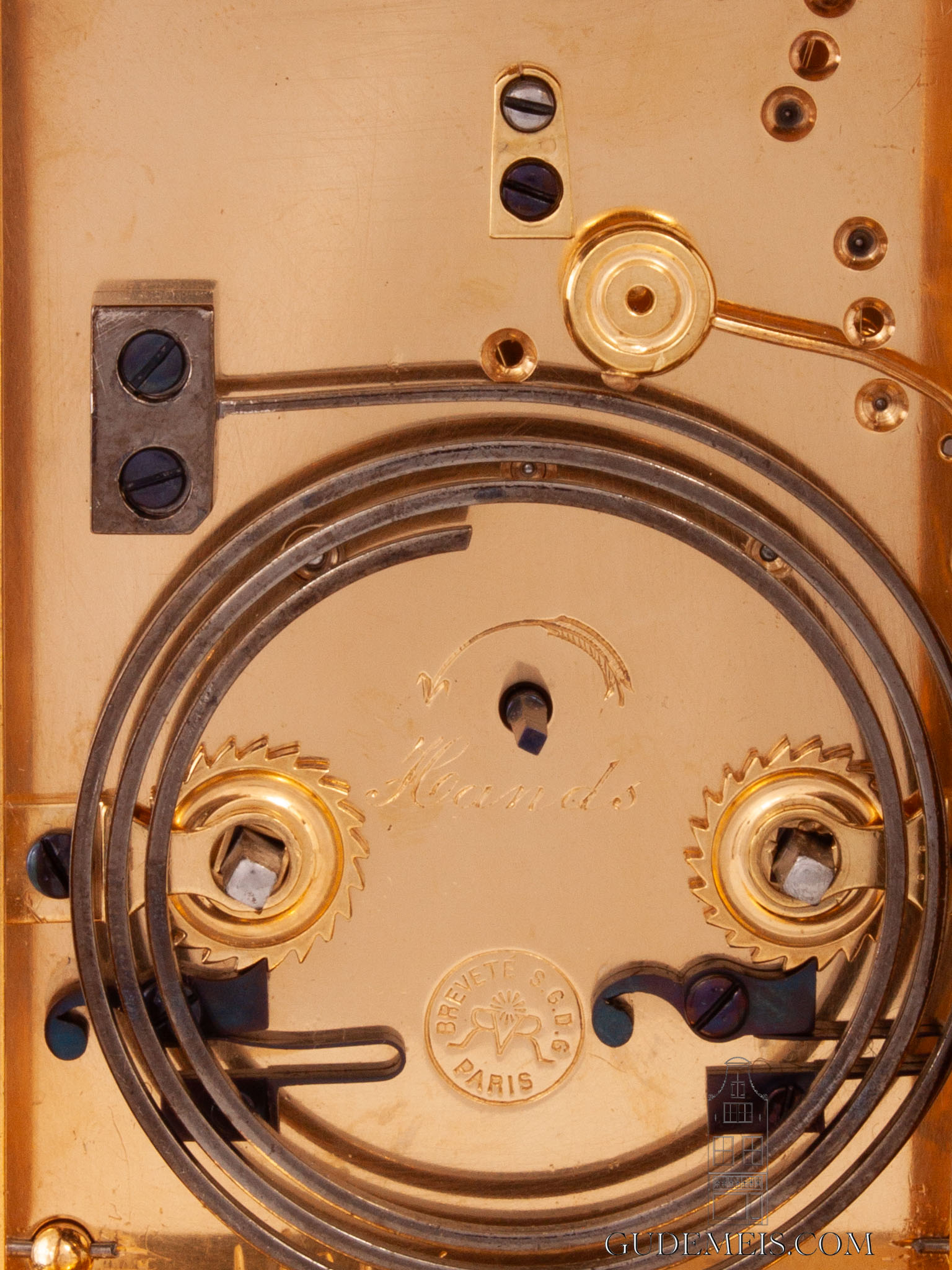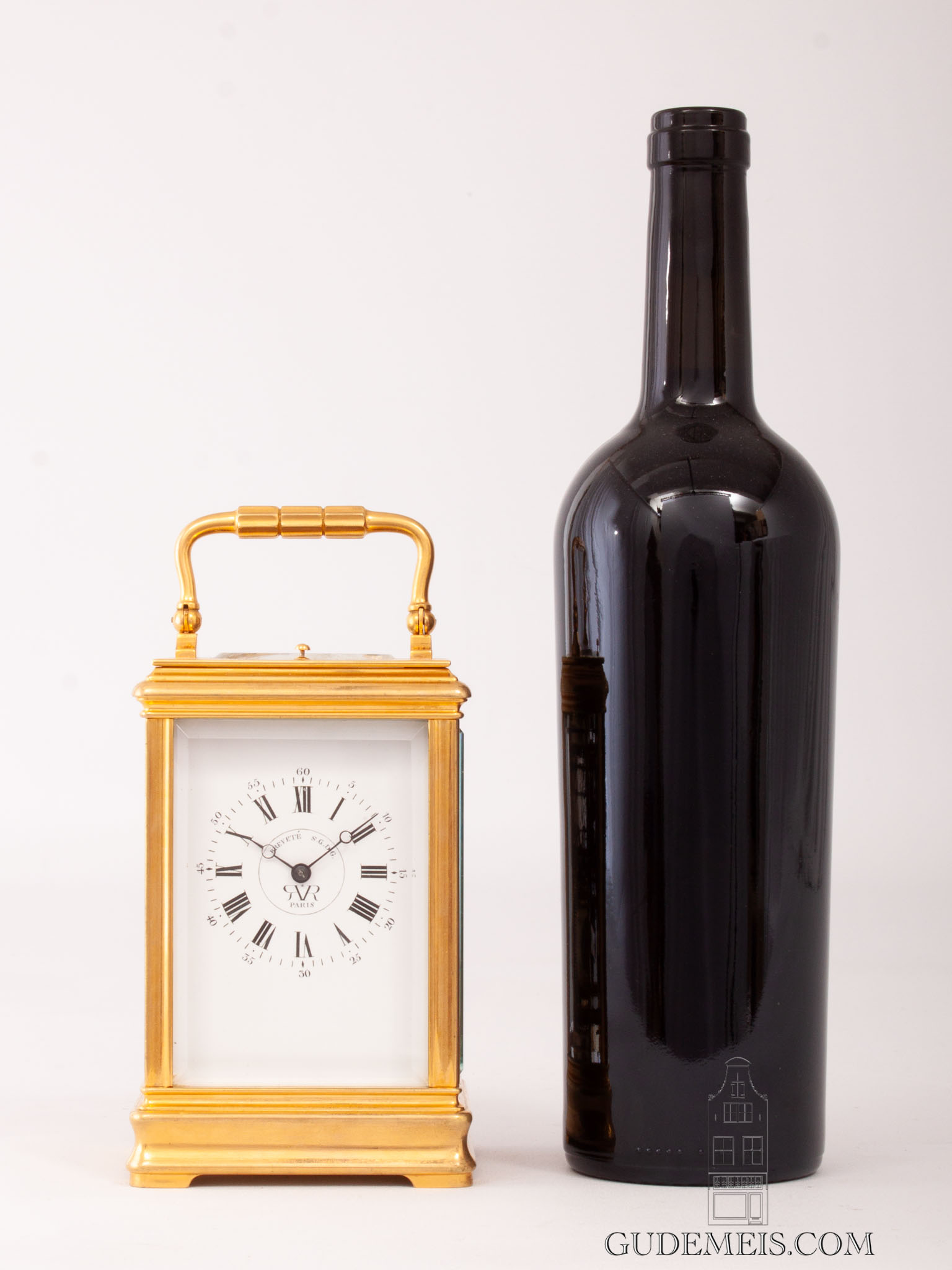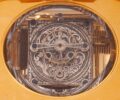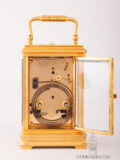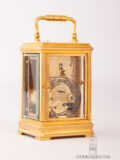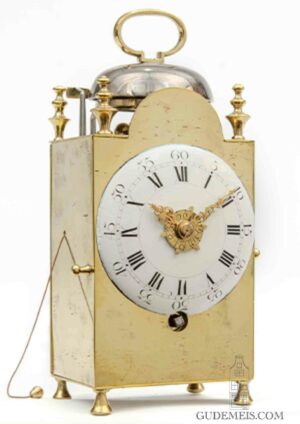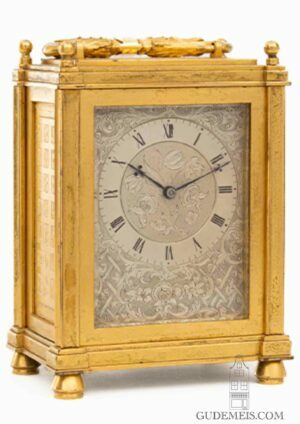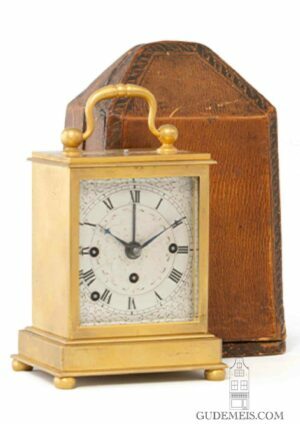A French gorge case carriage clock with rare tourbillon, Victor Reclus, circa 1890.
Description
Tourbillon and Karussel
Because pocket watches were carried upright in a pocket the balance and escapement were affected by gravity from one direction. This might affect the oscillation of the balance, the functioning of the balance spring and cause irregular wear. To solve this problem Abraham Louis Breguet invented the tourbillon in 1795 and patented it in 1801. It is a mechanism that constantly rotates the balance wheel, balance spring and escapement while the movement is running. By doing this, it mitigates the effects of stationary gravity.
Besides the technical advantages of this mechanism it is also a joy to behold it’s action. Several other makers also worked on the subject like there was Bahne Bonniksen (1859 – 1935) who developed the ‘Karussel’ which was a variation on the tourbillon. He mounted the escapement with balance on a rotating plateau. Less known is the Parisian maker Victor Reclus that patented his version of a tourbillon that has similarities with the Bonniksen ‘Karussel’ but rotates much quicker. The fascinating motion of this mechanism will be one of the primary reasons why Reclus executed this clock with it.
Breveté S.G.D.G.
The 7.5-cm enamel dial has Roman numerals and outer five minute marking. Centrally there is a circle in which the VR trademark is depicted and the inscription ‘Breveté S.G.D.G.’. The blued steel hands are of the Breguet type.
Breveté S.G.D.G (Sans Ganrantie Du Gouvernement) is a French type of patent that ceased to exist in 1968. It means patented without guarantee of the gouvernment.
The movement
The back plate of the movement also has the Victor Reclus trademark and the inscription ‘Breveté S.G.D.G.’. It is being driven by two spring barrels and is of eight day duration. It is regulated by a finely engraved Karussel with anchor escapement in combination with a bi-metalic balance. The clock strikes the hours and half hours by means of rack striking on a gong. By pushing the button on top, the clock repeats the last hour thats has struck.
Gorge case
The gilt brass case is of the ‘gorge’ type, referring to the deep mouldings. the case is surmounted with a carrying handle above an oval glass panel revealing the attractive escapement. The case is inset with bevelled glas panels to all sides. The moulded base is raised on flat feet.
Victor Reclus
Victor Reclus is recorded working in the Rue du temple in 1860 and 1880. In 1890 in the Rue Turenne. He got a distictive mentioning for his fine carriage clocks at the 1859 Exhibition and he won a silver medal at the 1867 Exhibition. Besides this he is known for several horological inventions.
(Tardy, Dictionnaire des Horlogers Français pp. 546, Allix and Bonnert, Carriage Clocks, PP. 449.



